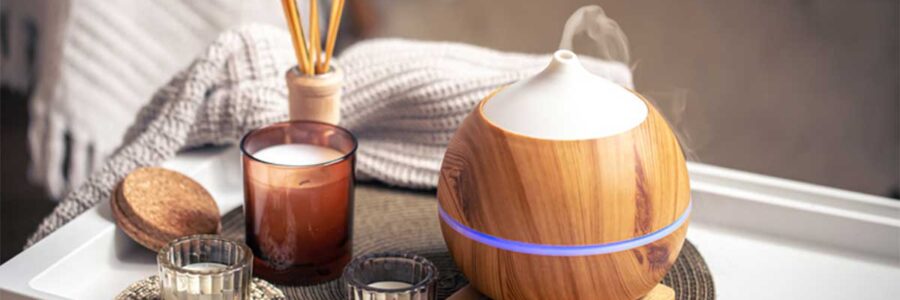We all love the smell of a fresh and clean home, but many of the scents we use to achieve that may actually be harmful to our health. Synthetic fragrances in air fresheners and candles contain harmful chemicals that can cause respiratory problems, headaches, and even organ damage. However, there are ways to achieve a fresh-smelling home without risking your health. Here are some tips on how to create a healthy and fresh-smelling home.
The Problem with Synthetic Fragrances
Synthetic fragrances are found in many of the air fresheners and candles we use in our homes. These fragrances contain harmful chemicals, such as volatile organic compounds (VOCs), which can cause various health problems. VOCs can irritate the eyes, nose, and throat, and cause headaches, dizziness, and even organ damage. In addition, many synthetic fragrances contain phthalates, known endocrine disruptors that can interfere with hormone function.
Products to Avoid
To avoid exposing yourself to harmful chemicals, it’s best to avoid products that contain synthetic fragrances altogether. Here are some of the products that should be avoided:
- Air freshener sprays and plug-ins
- Candles made with synthetic fragrances
- Incense sticks
- Scented cleaning products
Healthier Alternatives
There are healthier alternatives that can help you achieve a fresh-smelling home without risking your health.
Here are some options to consider:
-
Essential Oil Diffusers
Essential oils are a natural alternative to synthetic fragrances. They are extracted from plants and contain no harmful chemicals. Essential oils can be used in diffusers to create a fresh and pleasant scent in your home. Also, there are many different essential oils to choose from, each with their own unique scent and benefits.
-
Beeswax Candles
Beeswax candles are a healthier alternative to traditional candles made with synthetic fragrances. They emit a natural fragrance and do not contain harmful chemicals. Beeswax candles are also a more sustainable option, as they are made from renewable resources.
-
Air Purifying Plants
Plants are natural air purifiers that can help improve your home’s air quality. Some plants, such as snake, spider, and peace lilies, are particularly effective at removing toxins from the air. In addition to purifying the air, plants add a natural and pleasant scent to your home.
-
Potpourri
Potpourri is a mixture of dried flowers, herbs, and spices that can create a natural and pleasant scent in your home. Moreover, it is a healthier alternative to synthetic fragrances and can be placed in a decorative bowl to add a touch of beauty to your space.
Conclusion
Achieving a fresh-smelling home doesn’t have to come at the cost of your health. You can create a natural and pleasant scent in your home by avoiding synthetic fragrances and using healthier alternatives such as essential oil diffusers, beeswax candles, air-purifying plants, and potpourri. Not only will these options improve the air quality in your home, but they will also add a touch of beauty to your space.
References:
- Pope CA, Dockery DW, Schwartz J. Review of epidemiological evidence of health effects of paniculate air pollution. Inhalation Toxicol. 1995;7:1–18. doi: 10.3109/08958379509014267.
- Anderson HR, de Leon AP, Bland JM, et al. Air pollution and daily mortality in London: 1987-92. BMJ. 1996;312:665–669.
- “Volatile Organic Compounds (Vocs).” Minnesota Pollution Control Agency, www.pca.state.mn.us/pollutants-and-contaminants/volatile-organic-compounds-vocs.
- University, Nova Southeastern. “NSU Newsroom.” Soy Candles VS. Paraffin Candles | NSU Newsroom, nsunews.nova.edu/soy-candles-paraffin-candles/.
- Olszowski, T., Kłos, A. The Impact of Candle Burning During All Saints’ Day Ceremonies on Ambient Alkyl-Substituted Benzene Concentrations. Bull Environ Contam Toxicol 91, 588–594 (2013). https://doi.org/10.1007/s00128-013-1104-6
- Salthammer, Tunga et al. “Impact of operating wood-burning fireplace ovens on indoor air quality.” Chemosphere vol. 103 (2014): 205-11. doi:10.1016/j.chemosphere.2013.11.067
- Lin, Ta-Chang et al. “Incense smoke: clinical, structural and molecular effects on airway disease.” Clinical and molecular allergy : CMA vol. 6 3. 25 Apr. 2008, doi:10.1186/1476-7961-6-3
- Itoh, Toshio et al. “Examination of VOC Concentration of Aroma Essential Oils and Their Major VOCs Diffused in Room Air.” International journal of environmental research and public healthvol. 19,5 2904. 2 Mar. 2022, doi:10.3390/ijerph19052904


